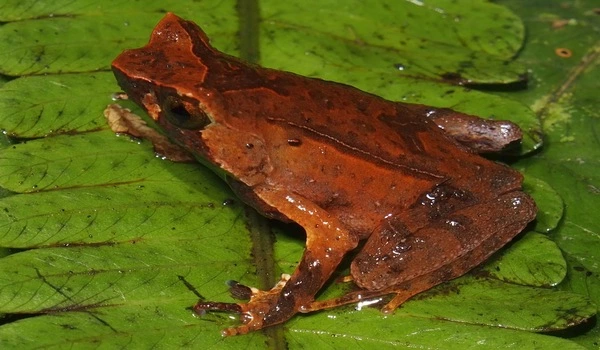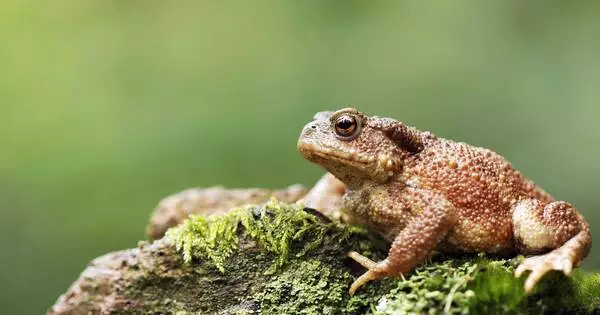Over fifty common toads were discovered in nest boxes and tree cavities at least 1.5 metres high by volunteers examining dormice and bats in trees. Common toads were previously assumed to be terrestrial. The highest toad observed in this investigation was three metres up a tree, and experts believe the toads may be travelling even higher. This is the first time amphibians’ ability to climb trees has been studied on a nationwide basis.
This implies that toads spend more time in trees than previously assumed. Toads are classified as terrestrial amphibians since they spend their time on both land and water. The most extreme example discovered throughout the study was a toad that climbed three metres up a tree. In light of this, scientists believe the toads could be climbing considerably higher. This is the first time amphibians’ ability to climb trees has been studied on a nationwide basis.
The unexpected find was made during a survey for hazel dormice and bats as part of the National Dormouse Monitoring Programme and the Bat Tree Habitat Key project. The University of Cambridge and Froglife led the study, which was funded by the wildlife charity People’s Trust for Endangered Species (PTES). It was published in the journal PLOS ONE.
This is a really exciting finding, and significant for our understanding of the ecology and conservation of common toads — one of the most widespread and abundant European amphibians.
Dr Silviu Petrovan
“This is a really exciting finding, and significant for our understanding of the ecology and conservation of common toads — one of the most widespread and abundant European amphibians,” said Dr Silviu Petrovan, Senior Researcher at the University of Cambridge and Trustee at Froglife, and first author of the study.
He added: “We know common toads favour woodlands as foraging and wintering habitat, but it appears their association with trees is much more complex than we had previously thought.”
Common toads are regarded as typical terrestrial amphibians, which spend their time both on land and in water during breeding. To date there have only been a handful of documented sightings of common toads in trees in the UK.
As a result, unlike bat and dormouse surveys, which deliberately target this habitat, common toads and UK amphibians in general have never been investigated in trees. The study emphasizes the significance of data exchange among conservation organizations representing diverse species, and it demonstrates that there is still much to learn about wildlife in the UK, especially regarding species thought to be well-known.
PTES Conservation Research Manager Nida Al-Fulaij stated: “We couldn’t believe what we discovered. We’re used to finding woodland birds and other small mammals in nest boxes, but we hadn’t thought of amphibians.”

During examinations of hazel dormouse nest boxes (1.5m above ground) and tree cavities commonly utilized by bats, over 50 common toads were discovered. Many of the cavities were small or not visible from the ground, making it difficult to determine how toads find them and how difficult it is for toads to climb specific trees. Toads were not discovered in boxes or tree holes with other species, but were discovered in old nests formed by dormice and even birds.
While 50 records is not a huge number, it is comparable to records of other animals known to use trees regularly — such as blue tits. This suggests that toads spend more time in trees than was previously thought. If this is true, it means that common toads could be found in up to one in every hundred trees in the UK in particularly favourable areas, such as near large ponds or lakes.
The discovery suggests that tree cavities might represent an even more important ecological feature than conservationists previously thought. It highlights the importance of protecting our remaining natural woodland habitats, especially ancient trees with veteran features (such as hollows, cracks and other natural cavities) for all wildlife.
According to Froglife data from 2016, common toads have fallen by 68 percent on average over the previous 30 years in the UK. It is still unknown why toads climb trees and use nest boxes. Searching for food, avoiding predators, and avoiding parasites such as toad fly could all be factors.
“Future targeted research will allow scientists to better understand the reasons for this tree-climbing behavior in toads, as well as how woodland management should accommodate for it,” Petrovan said. Froglife is asking members of the public to use their Dragon Finder App to report any sightings of amphibians in trees, or to contact them personally.
















